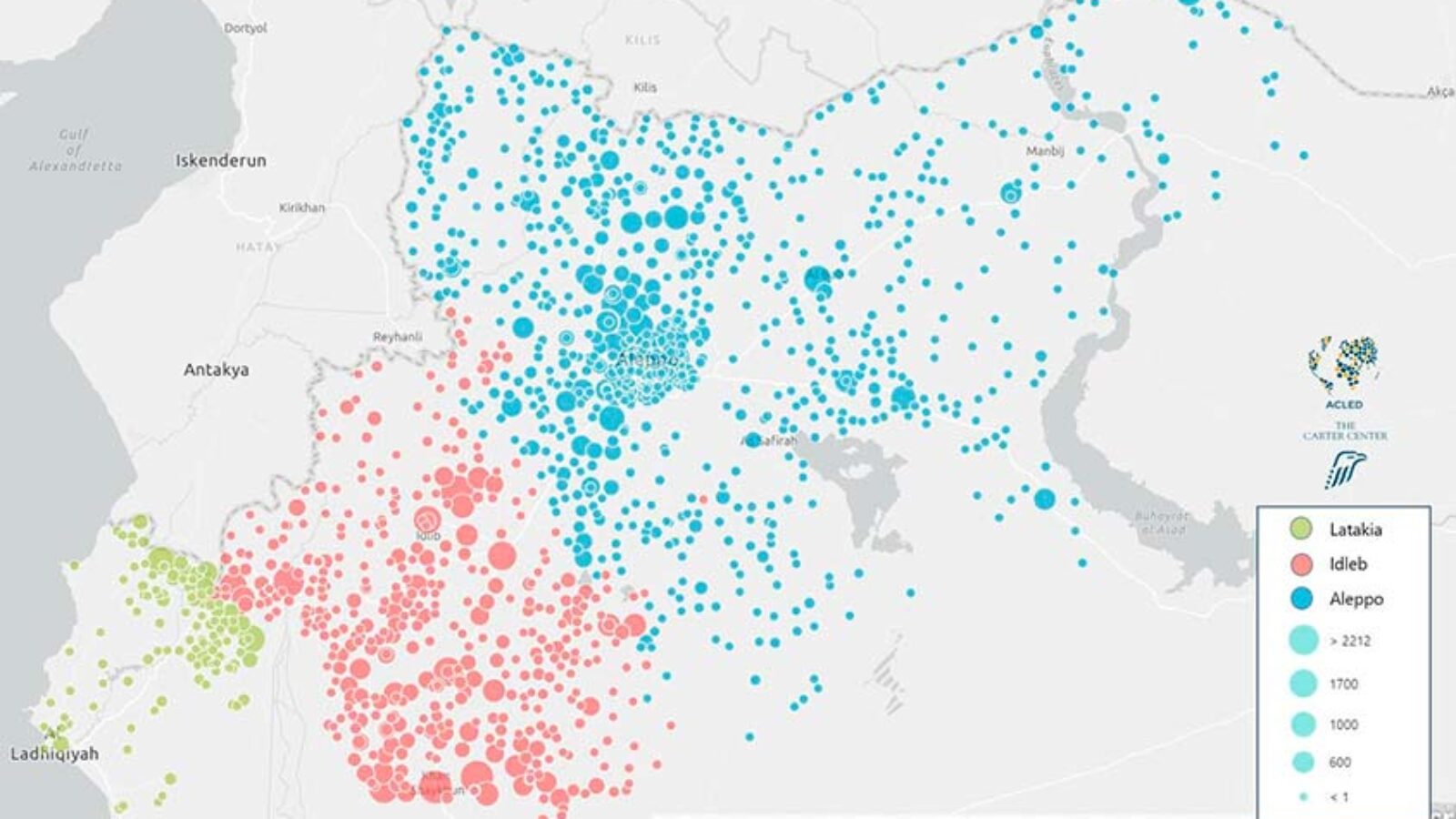Using Conflict Data to Help Demining Efforts in Syria
Even as conflict in many areas of Syria subsides, dangers still remain – including abandoned or unexploded weapons that could kill or maim unsuspecting civilians as they try to rebuild their lives.
The Carter Center’s Syria conflict mapping team is helping to identify communities that are likely to be home to large numbers of explosive remnants of war, as they are called, and sharing that information with humanitarian organizations planning to clear these weapons.
Since 2012, the team has been gathering data about conflict events in Syria using open-source information, such as tweets, YouTube videos, Facebook posts, and traditional news stories. When compiled and analyzed, it helped paint a more accurate picture of what was happening on the ground. The Center shared this information with the U.N., official and unofficial mediators, and humanitarian groups to help them with their work.
Now the team is crunching the numbers again to help demining organizations.
“We learned that these organizations often lacked information about the size or nature of a conflict event, which is important when you’re trying to figure out how many explosive remnants might still be around,” explained Kate Keator, manager of the mapping project. “Our data often tells us exactly how many of each specific type of weapon was used during a particular conflict event, allowing us to more accurately predict the likely scope of the problem.”
For example, Center researchers know that in Southern Syria, at least 31,542 individual munitions were used in the Daraa Governate, compared with 4,075 in Quneitra Governorate. They know what percentage of those were rockets, what percentage barrel bombs, what percentage landmines.
“Most experts say the failure rate of these sorts of weapons is somewhere between 10 and 30 percent,” Keator said, “so there’s likely to be between 3,150 and 9,460 unexploded weapons in Daraa Governate compared with 400 to 1,220 in Quneitra Governate.”
Demining organizations can use this information to help figure out where their efforts are most needed.
The numbers are also helpful to organizations working on refugee return – after all, how can you return home if your community may still be full of explosive devices?
The team published its third report – a look at weapons used in northwest Syria – this week and hopes to finish mapping all of Syria by the end of the year. It is sharing data directly with humanitarian organizations even before the reports are published.
“So far,” Keator said, “we’ve documented a minimum of 244,103 uses of explosive weapons in 1,987 different communities, and we’ve still got more of the country to review. Clearing these weapons is likely to take decades and tens of millions of dollars.”
“The good news is that in other conflicts, demining and peacebuilding have been intertwined. In Somaliland, Afghanistan, and Colombia, for example, ex-combatants were given jobs in demining, providing them with a nonviolent way to make a living. In Western Sahara, discussions on clearance helped keep peace talks alive. The same sort of thing could happen in Syria, but it will require all parties to work together to find a holistic solution to the problem.”
In January, the Center organized a meeting that brought together demining organization staff, U.N. officials, and international donors to talk about the issue.
“It was a beautiful example of using data to bring together people from disparate groups for a common purpose,” Keator said. “We hope to do it again.”
Related Resources
Read Syria Conflict Mapping and Analysis Reports
Global Impact Starts with You
Your support sustains the Carter Center's mission of waging peace, fighting disease, and building hope around the world.

